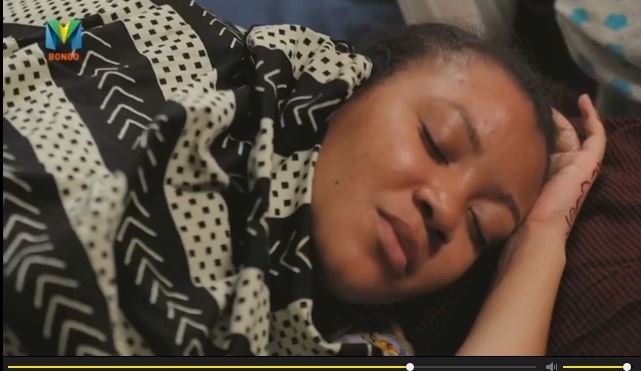Employer Contributions to SHA in 2025: Anchoring Universal Health Coverage in Kenya’s Formal Sector
Introduction
The Social Health Authority (SHA), operational since October 1, 2024, under the Social Health Insurance Act of 2023, is a cornerstone of Kenya’s pursuit of Universal Health Coverage (UHC). Replacing the National Hospital Insurance Fund (NHIF), SHA consolidates healthcare financing into three funds: the Social Health Insurance Fund (SHIF) for curative services, the Primary Health Care Fund (PHCF) for preventive care, and the Emergency, Chronic, and Critical Illness Fund (ECCIF) for specialized interventions. A key pillar of SHIF’s funding is mandatory employer contributions, set at 2.75% of an employee’s gross monthly income, matched by employees, to ensure equitable access to healthcare. In 2025, employer contributions have driven formal sector enrollment, with 26.7 million Kenyans registered by September, including 460,000 teachers transitioned to SHA’s Public Health Medical Schemes Fund. This article explores the structure, impact, challenges, and implications of employer contributions to SHA in 2025, contextualized within Kenya’s evolving medical landscape.
The Kenyan Medical Situation: The Urgency of Employer Contributions
Kenya’s devolved health system faces systemic challenges that underscore the importance of employer contributions to SHA. With a population of 56.6 million, the country contends with a health worker density of 1.6 per 1,000—far below the WHO’s recommended 4.45—resulting in overburdened facilities, particularly in rural areas housing 70% of Kenyans. Maternal mortality stands at 355 per 100,000 live births, non-communicable diseases (NCDs) like diabetes affect 5.2% of adults, and drug stockouts plague 30% of health facilities due to supply chain inefficiencies. Out-of-pocket (OOP) expenditures, accounting for 24% of total health spending, impoverish 11% of households annually, with healthcare costs rising 3.3% in 2025 per KNBS data. Arid counties like Turkana and Samburu report SHA registration rates below 20%, exacerbating inequities.
The formal sector, comprising roughly 20% of the workforce (approximately 2.8 million workers), is a critical revenue source for SHA. Employer contributions stabilize SHIF’s funding, enabling subsidies for the informal sector (40% of the workforce) and indigents (1.5 million subsidized by September 2025). With SHA inheriting NHIF’s KSh 30.9 billion debt and only 3.33 million active contributors among 26.7 million registrants, employer compliance is vital to bridge the KSh 168 billion funding gap for full implementation.
| Challenge | 2025 Statistic | Role of Employer Contributions |
|---|---|---|
| OOP Expenses | 24% of health spend; 11% households impoverished | Subsidize indigents, reduce OOP to <15% |
| Workforce Shortage | 1:5,000 doctor ratio urban; 1:20,000 rural | Fund training and facility upgrades via SHIF |
| Low Registration | <20% in arid counties | Cross-subsidize rural enrollment |
| NHIF Debt | KSh 30.9B burden | Stabilize SHIF for debt clearance |
Structure of Employer Contributions to SHA
Under the Social Health Insurance Act, employer contributions to SHIF are mandatory for formal sector employees, calculated at 2.75% of gross monthly salary, matched by an equal employee deduction. For example, an employee earning KSh 50,000 monthly contributes KSh 1,375, with the employer adding another KSh 1,375, totaling KSh 2,750 per month. The minimum contribution is KSh 300 for low-income earners, with no cap on higher salaries to ensure progressivity. These funds support SHIF benefits, including inpatient/outpatient care (up to KSh 300,000 annually for oncology), maternity under Linda Mama, and diagnostics via ECCIF. Employers must remit contributions monthly through the SHA portal (sha.go.ke) or USSD (*147#), integrated with the Kenya Revenue Authority (KRA) for compliance.
By September 2025, employer contributions form a significant portion of SHIF’s projected KSh 104.8 billion annual inflows, complementing government appropriations (KSh 29.6 billion in FY 2025/26) for PHCF and ECCIF. The formal sector’s contributions are pivotal for cross-subsidizing the informal sector’s “Lipa SHA Pole Pole” plan and indigent coverage, with 80% of means-tested registrants fully subsidized.
2025 Employer Contribution Milestones and Impact
In 2025, employer contributions have catalyzed SHA’s rollout, particularly in the formal sector, which includes public servants, teachers, and private firms. Key milestones highlight their role in advancing UHC.
Formal Sector Enrollment Surge
- 460,000 Teachers Transitioned: By December 2025, all teachers under the Teachers Service Commission (TSC) migrated to SHA’s Public Health Medical Schemes Fund, with employers (TSC) remitting 2.75% contributions. This bolstered SHIF’s revenue, enabling comprehensive coverage for educators and their dependents.
- Private Sector Compliance: Large employers, including banks and multinationals, integrated SHA deductions into payrolls by Q1 2025, with 71.4% of 17,755 health facilities e-contracted to service SHA members. Compliance rates reached 85% among formal employers, per SHA reports, driven by KRA audits.
Financial and Access Impacts
- Revenue Generation: Employer contributions, alongside employee deductions, account for an estimated KSh 60 billion of SHIF’s 2025 inflows, funding 1 million+ primary care accesses and 500,000+ maternity services under Linda Mama. This reduces OOP reliance, particularly for NCDs and emergencies.
- Cross-Subsidization: Formal sector contributions subsidize 1.5 million indigents, with President Ruto announcing plans to extend to another million via county partnerships in September 2025. This addresses equity gaps in low-uptake regions like West Pokot.
- Specialized Care Funding: Contributions support ECCIF’s KSh 8 billion budget, including KSh 5 billion for overseas treatment pilots (e.g., organ transplants at Apollo Hospitals, India), gazetted in September 2025.
Key Employer Groups
- Public Sector: Government entities, including ministries and parastatals, lead contributions, with 100% compliance for 700,000+ civil servants by mid-2025.
- Private Sector: Firms with >50 employees report 90% compliance, though SMEs cite cashflow strains. Safaricom’s partnership for SHA’s digital ecosystem (KSh 104.8 billion) exemplifies private sector alignment.
- Teachers and Uniformed Services: TSC and security agencies (e.g., police, KDF) transitioned seamlessly, with dedicated schemes ensuring uninterrupted coverage.
| Employer Group | Estimated Workers (2025) | Contribution Impact | Compliance Rate |
|---|---|---|---|
| Public Sector | 700,000+ | Funds indigent subsidies | 100% |
| Private Sector | 2.1M | Supports SHIF benefits | 85% |
| Teachers (TSC) | 460,000 | Stabilizes Public Schemes Fund | 100% |
| SMEs | ~500,000 | Partial compliance due to costs | 70% |
Challenges in Employer Contributions
Despite progress, 2025 exposed several hurdles:
- SME Resistance: Small and medium enterprises, facing a 4.8% GDP deficit environment, report affordability issues, with 30% non-compliance due to high contribution rates. GeoPoll surveys indicate 45% employer awareness but skepticism over returns.
- Claims Processing Delays: System glitches in SHA’s claims portal led to provider boycotts in Q1 2025, eroding trust. A KSh 1 billion emergency contract with Savannah Informatics addressed this, but delays persist.
- Informal Sector Gap: While employer contributions bolster SHIF, the informal sector’s low uptake (40% of workforce) strains cross-subsidization, with only 3.33 million active contributors.
- NHIF Debt Legacy: The KSh 30.9 billion NHIF debt diverts SHIF resources, with employers indirectly bearing costs through delayed reimbursements to facilities.
- Legal and Awareness Barriers: Pending court cases questioning SHA’s constitutionality and low public awareness (45% per GeoPoll) slow employer buy-in, particularly in rural-based firms.
Employer Perspectives and Adaptations
Employers have adapted variably. Large corporations leverage automated payroll systems, while SMEs seek government leniency on penalties. The Federation of Kenya Employers (FKE) has advocated for phased contributions for smaller firms, citing 3.3% healthcare cost inflation. Public sector employers, like TSC, benefit from streamlined treasury-backed remittances, ensuring compliance. Private providers, however, criticize SHA’s lower reimbursement rates compared to NHIF, with Rupha’s 2025 survey scoring SHA implementation at 44% due to payment delays.
Conclusion: A Pillar of UHC with Room for Refinement
Employer contributions to SHA in 2025—projected at KSh 60 billion—have been instrumental in enrolling 26.7 million Kenyans, funding critical benefits, and subsidizing vulnerable groups. By anchoring SHIF’s revenue, formal sector employers, particularly in public and large private entities, drive Kenya’s UHC agenda, alleviating OOP burdens and supporting 1 million+ primary care accesses. However, challenges like SME compliance, claims inefficiencies, and a KSh 168 billion funding gap demand urgent attention. As Health CS Deborah Barasa noted, scaling contributions while addressing debt and digital hurdles is critical. With health spending at 4.2% of GDP, aligning employer mandates with public-private partnerships and awareness campaigns could ensure SHA transforms Kenya’s healthcare into an equitable, resilient system by 2030.
AURORA’S QUEST THURSDAY 25TH SEPTEMBER 2025 FULL EPISODE PART 1 AND PART 2 COMBINED








You must be logged in to post a comment.